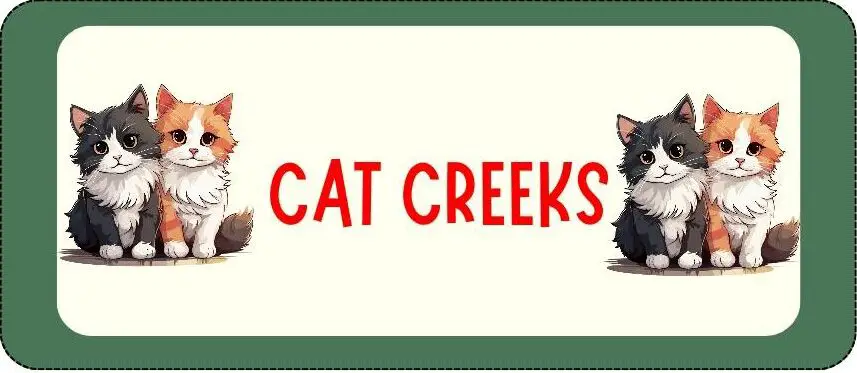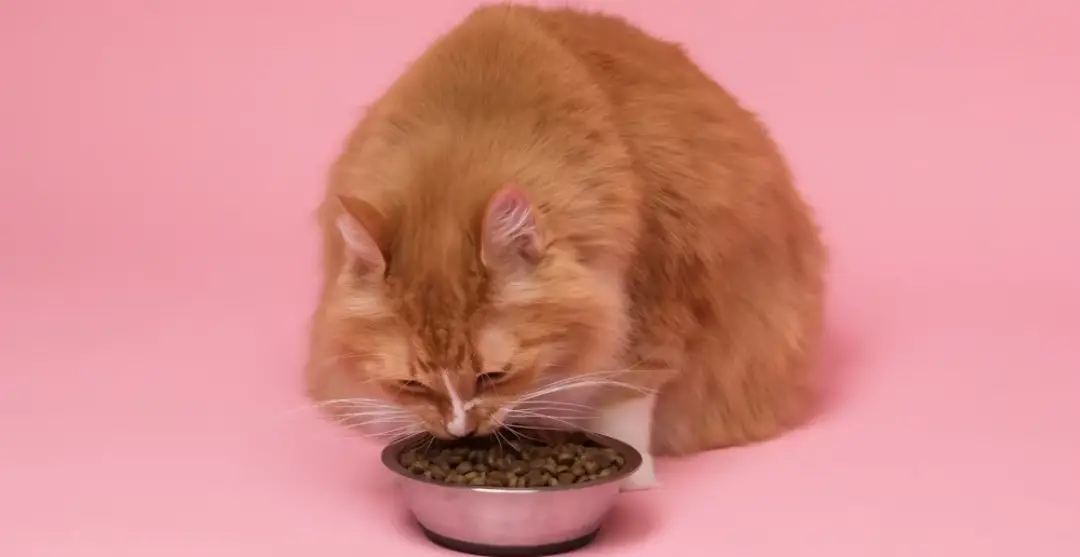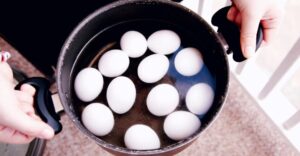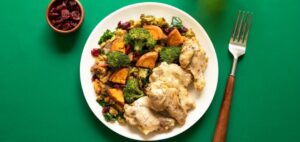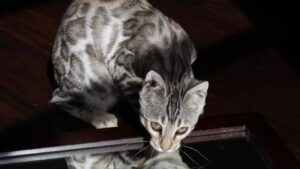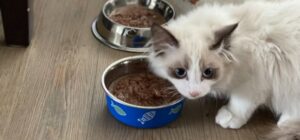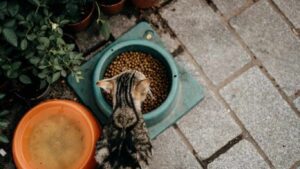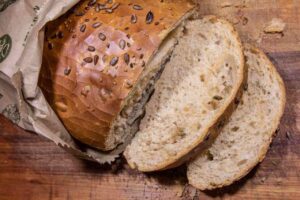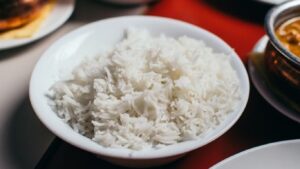Are you wondering if it’s safe for your cat to rely solely on dry food? Join me, let’s unravel the mystery!
In this post, I’ll be delving into the advantages and drawbacks of a dry food diet for your cat.
First thing to keep in mind is that I’m not a veterinarian, however, I know one or two about cats and I also own a cat called Oscar.
This topic is contradictory, some say it’s fine, others say it’s not, my take is to mix both dry and wet food.
That being said, let’s get started…
Is It Ok If My Cat Only Eats Dry Food
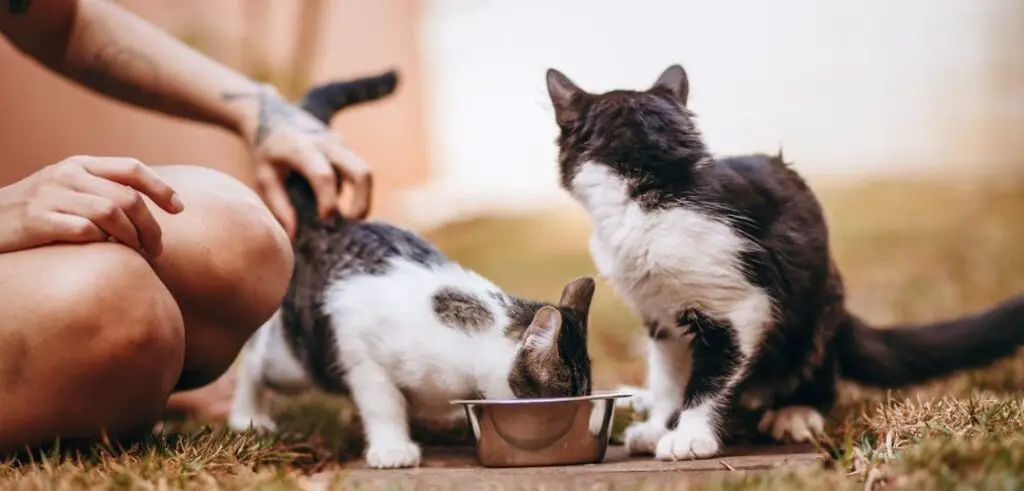
Yes, it is generally okay if your cat only eats dry food, as long as the food meets their nutritional needs, and they are drinking enough water daily.
While it’s generally okay for cats to eat dry food, it’s essential to ensure they stay hydrated since dry food contains less moisture than wet food.
Providing access to fresh water is crucial to prevent dehydration, especially for cats who primarily consume dry food.
My opinion is that if you’re feeding only dry food, you should monitor your cat’s overall health and weight to ensure they’re getting the necessary nutrients from their diet.
Note: To balance the benefits and drawbacks of feeding your cat only dry food, you may choose to feed a combination of both wet and dry food.
Let’s take a look at the benefits of feeding only dry food to your cats.
Benefits of Feeding Only Dry Food to Your Cat
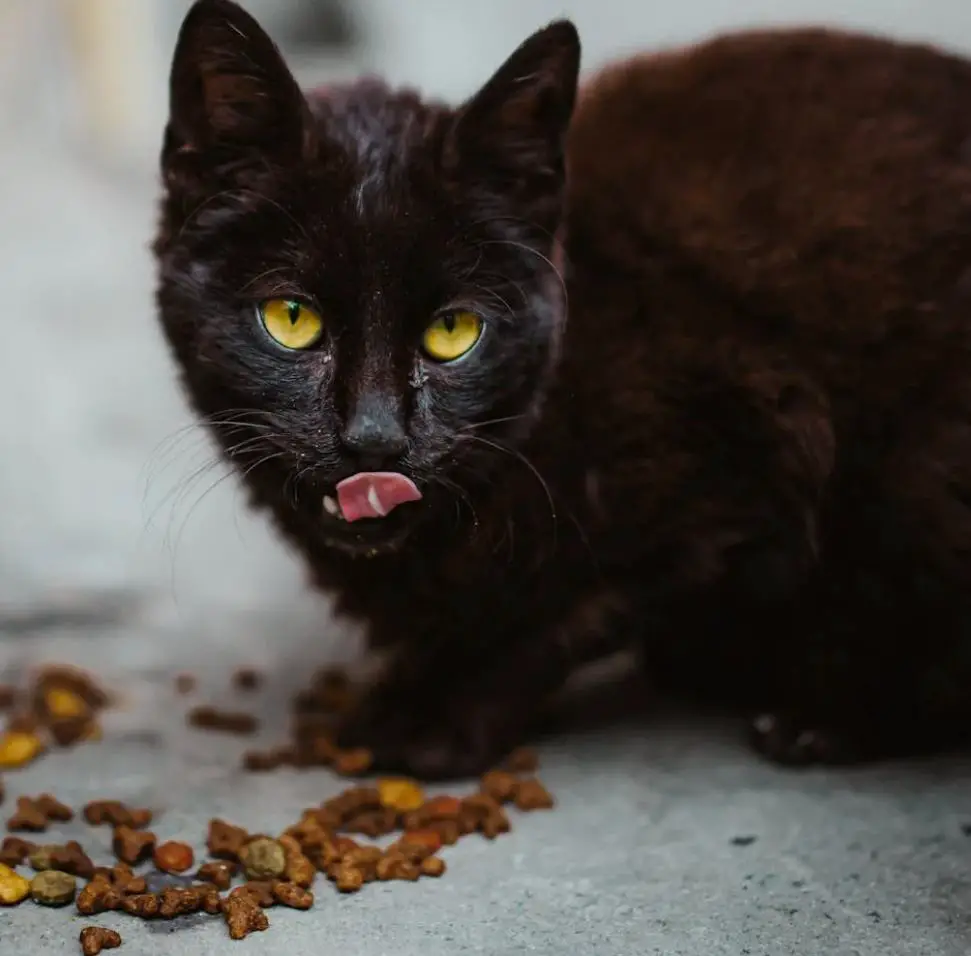
Here are some of the most common reasons why I think feeding dry cat food is beneficial:
1. Convenience for Cat Owners
Starting with the ease of use for cat owners, feeding dry food to your cat has many advantages.
For people who are busy, dry cat food is a hassle-free solution because it is simple to measure and serve.
Dry food keeps its nutritious value for longer periods of time than wet food, which must be refrigerated and spoils easily.
This implies that you can put food in your cat’s bowl in the morning and know that it will be available to them all day.
For cat owners who work long hours or are frequently away from home, this convenience is very helpful.
2. Improves Dental Health
The improvement of your cat’s dental health is one of the main advantages of feeding it dry food.
Your cat’s teeth might become free of plaque and tartar development thanks to the crisp texture of dry cat food.
Cats who chew on dry food have a lower risk of developing dental conditions like gingivitis and periodontal disease because the friction between their teeth functions as a natural toothbrush.
Dry cat food can help avoid dental problems that could later necessitate costly veterinary care by encouraging proper oral hygiene.
3. Cost Effectiveness
As a cat owner, I believe that giving your cat dry food might be a more economical choice than wet food.
Dry cat food typically comes in bigger, more affordable packets, so you can purchase it in bulk and end up saving money.
Additionally, dry food has a longer shelf life, reducing the chances of it going to waste.
Since you won’t have to refrigerate dry food, you can avoid the costs associated with storing and preserving wet food.
Because of this, dry cat food is an affordable option, particularly for people who have several cats to feed or are on a tight budget.
4. Ease of Storage
It’s really convenient to store dry cat food, especially if you have limited space or storage alternatives.
Dry food may be kept in airtight containers or resealable bags, whereas wet food cans or pouches can take up important refrigerator or cabinet space.
In addition to keeping the food fresh, this keeps it safe from pests, dampness, and other impurities.
Whether you’re going on a weekend trip or a longer vacation, you can always bring your cat’s favorite meal with you thanks to the convenient compact size of dry cat food.
5. Aids in Weight Management
There are a number of advantages to feeding your cat solely dry food in terms of weight control.
Generally speaking, dry cat food contains less calories than wet food, which is advantageous if your feline companion needs to lose weight or keep it off.
Dry food’s lower calorie content lowers the risk of obesity and associated health issues by preventing excessive weight gain.
Furthermore, dry cat food frequently has a higher fiber content than wet cat food. Fiber can make your cat feel fuller and less likely to overeat by increasing sensations of fullness after meals.
This is especially useful for cats who tend to overeat or who are constantly demanding for food.
6. Longer Shelf Life
One of the significant advantages of feeding your cat only dry food is the longer shelf life it offers.
Dry cat food can be kept in storage for a long time without going bad, unlike wet food, which often needs to be eaten within a day or two after opening.
The low moisture level of dry food prevents the growth of mold and bacteria that can cause food deterioration, hence the longer shelf life.
Longer shelf lives not only save you from needing to buy cat food as frequently, but they also enable you to buy in bigger quantities, which may end up saving you money over time.
But, in order to preserve its freshness and nutritional content, dry cat food must be stored correctly in a cold, dry location.
7. Reduced Mess and Odor
You may drastically cut down on trash and odor surrounding the feeding area by feeding your cat just dry food.
Compared to wet food, dry cat chow is less likely to leave behind unpleasant smells and messy residue.
Dry food eliminates the need to deal with the sticky mess and bad odors that sometimes remain after feeding your cat.
Moreover, handling and storing dry cat food is usually more convenient. It is supplied in small kibble form that is simple to measure out and add to your cat’s bowl.
This removes the inconvenience of opening and storing several cans or pouches, as well as the need to handle messy, wet food.
Disadvantages of Feeding Only Dry Food to Your Cat
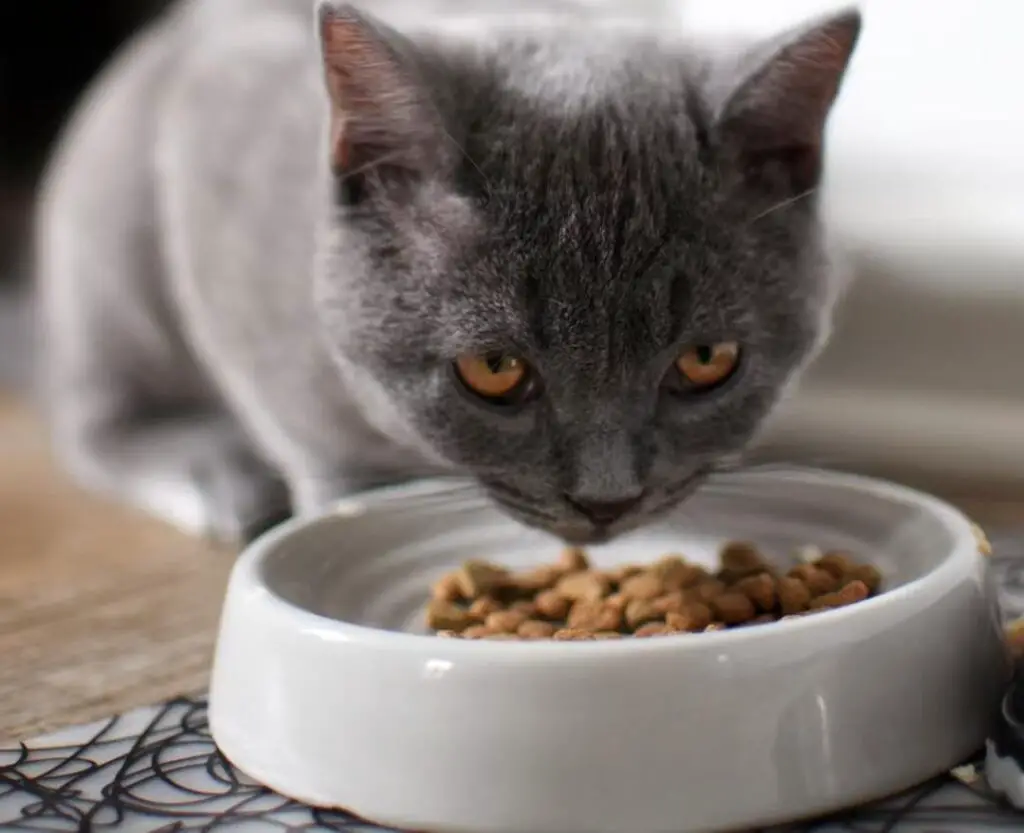
Here are some common reasons why feeding your cat a dry food might not be a great option:
1. Increased Risk of Obesity
Feeding your cat exclusively dry food has several drawbacks, one of which is an increased risk of obesity.
Dry cat food often has a high calorie and carb content, which, if not controlled, can cause weight gain.
Because their bodies are made to function best on a diet high in animal protein, cats are obligate carnivores.
However, the larger percentage of carbs in dry cat food might lead to weight gain and obesity in cats.
Numerous health concerns, including diabetes, joint troubles, and heart disease, can be brought on by obesity.
2. Potential for Nutritional Imbalance
If your cat is fed only dry food, this could potentially lead to an imbalance in their diet.
For their health to remain at its best, cats need a certain ratio of nutrients, including vital vitamins, minerals, and amino acids.
Even while some dry cat feeds make the claim to be “complete and balanced,” it’s possible that they don’t include all the nutrients in the right amounts.
Furthermore, some nutrients may be further compromised by the manufacturing techniques used to produce dry cat food, therefore lowering its nutritional value.
Adding wet or raw food to your cat’s feeding regimen is advised to make sure they get a balanced diet.
3. Dry Cat Food is Full of Fillers
The fact that dry cat food frequently contains additives is another drawback for feeding your cat only dry food.
Low-nutrient substances called fillers are added to food to increase bulk and cut production costs.
Cats do not naturally consume corn, wheat, or soy, which are common fillers.
These components can be difficult for cats to digest and have minimal nutritional value.
Feeding your cat a food heavy in fillers might cause upset stomach symptoms, like diarrhea and vomiting.
It is crucial to thoroughly review the ingredient list and select dry cat chow that doesn’t contain any extraneous fillers.
4. Dry Cat Food is Low in Meat-based Protein
Since cats are obligate carnivores, a diet rich in animal protein is necessary to suit their nutritional needs.
Regretfully, compared to wet food, dry cat food frequently has lesser quantities of meat-based protein.
This is due to the fact that dry food mostly uses plant-based ingredients to create kibble, which might not give cats the ideal amino acid balance.
Inadequate consumption of protein can cause cats to lose muscle mass, have unkempt coats, and experience general health problems.
5. Decreased Palatability and Variety
Because dry cat food comes in so few flavors and textures, your feline friend may grow bored with it.
Due to their notoriously picky eating habits, cats may get bored with their diet if they don’t get diversity.
If they refuse to eat, this may result in a diminished appetite and possible dietary inadequacies.
Cats, who often like moist and juicy diets, may also find dry food less enticing due to its lack of moisture.
Since cats need to drink a lot of water to keep their urinary systems healthy, this might be especially problematic for them if they have a history of urinary tract problems.
6. Dry Cat Food is Not a Natural Diet
In the wild, cats mostly eat meat and organs that are high in moisture. On the flip side, dry cat food is heavily processed and devoid of the natural nutrient balance that occurs in a cat’s diet.
Many times utilized as fillers in dry food, certain nutrients from plant sources are difficult for cats to digest and absorb.
Over time, this may lead to nutritional imbalances or deficiencies, which may have an effect on their general health and wellbeing.
7. Digestibility Concerns
Giving your cat only dry food could cause stomach problems. Compared to wet food, dry cat food usually contains less moisture, which can make it more difficult for your cat to digest.
Because of their innately low thirst drive, cats who only eat dry food may not drink enough water to make up for the absence of moisture in their diet.
Urinary tract issues and dehydration may result from this.
Moreover, cats may find it more difficult to metabolize the high carbohydrate content of dry food, which could lead to gastrointestinal distress and weight gain.
8. Dry Cat Food is Low in Moisture
Finally, compared to wet or raw food, dry cat food has a lower moisture level.
Due to their modest thirst drive and innate tendency to get the majority of their fluids from food, cats are not very thirsty.
Cats who only eat dry food could not drink enough water to stay properly hydrated.
Urinary tract issues like stones or crystals may result from this.
Giving your cat a mix of wet and dry food can help guarantee that they get the right amount of moisture to maintain the health of their urinary system.
Finding a Balanced Approach
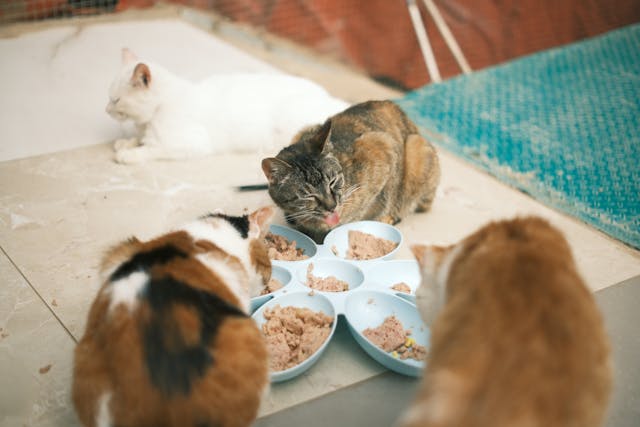
Finding a balanced approach is crucial, but giving your cat exclusively dry food can be an easy and economical choice.
First and foremost, make sure the dry food you select satisfies all of your cat’s nutritional requirements and is nutritionally complete.
Second, keep a close eye on your cat’s weight and physical condition to avoid obesity or malnourishment.
Thirdly, to give them extra nutrition and moisture, think about adding wet food or fresh, raw items to their diet.
Fourth, always have an abundance of fresh water available to avoid dehydration.
Lastly, work with your veterinarian to develop a customized feeding schedule that takes into account the unique requirements of your cat.
Conclusion
In the end, the choice is yours and your cat’s. While dry food can provide convenience and dental benefits, it’s essential to ensure your feline friend receives a well-rounded diet. Remember to consult with your veterinarian and consider incorporating wet food or fresh ingredients to meet your cat’s nutritional needs. Keep your furry companion happy and healthy with a balanced approach to their diet.
Related: Human food Bengal cats can eat.
Questions
Let’s take some common questions:
Can my cat survive on a diet of only dry food?
While cats can survive on a dry food diet, it may not provide all the necessary nutrients. It’s recommended to incorporate wet food or fresh ingredients to ensure a well-balanced diet.
Is it true that dry food helps maintain my cat’s dental health?
Yes, dry food can help with dental health by reducing plaque buildup. However, it’s still important to regularly check your cat’s teeth and consider other dental care options, such as brushing or dental treats.
Can I switch my cat from wet food to dry food abruptly?
It’s best to transition gradually when switching your cat’s food. Mix small amounts of dry food with wet food, increasing the ratio of dry food over time to allow your cat’s digestive system to adjust.
Should I be concerned if my cat refuses to eat dry food?
If your cat refuses dry food, it’s important to monitor their overall eating habits and ensure they’re receiving a balanced diet. Consult with your veterinarian to explore alternative food options and rule out any underlying health issues.
